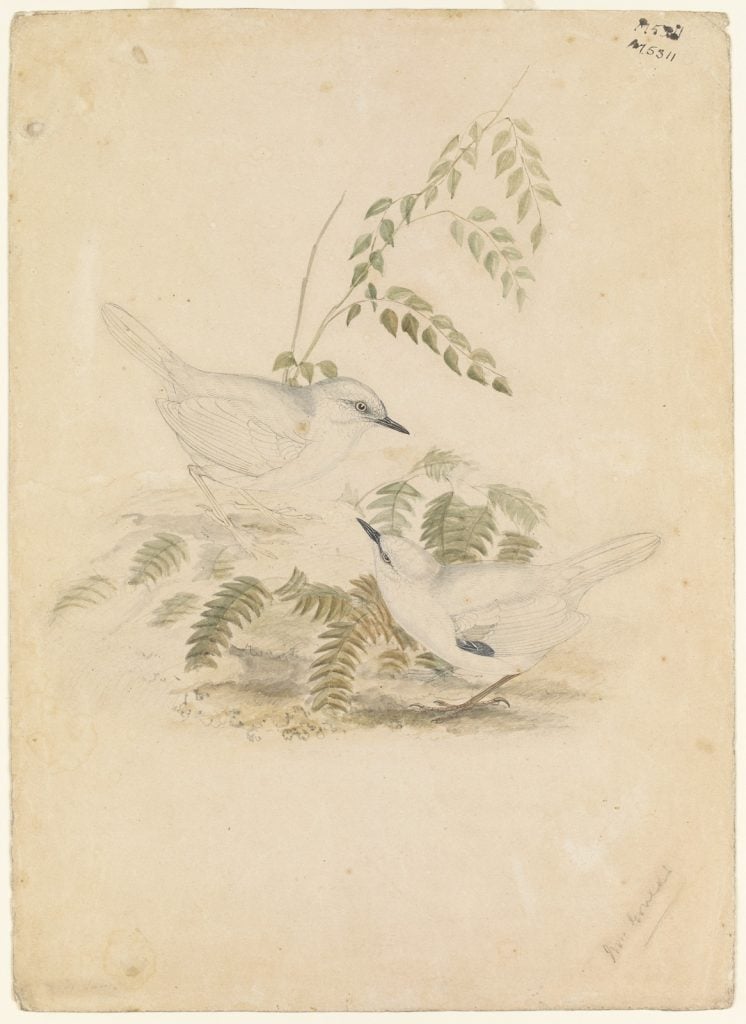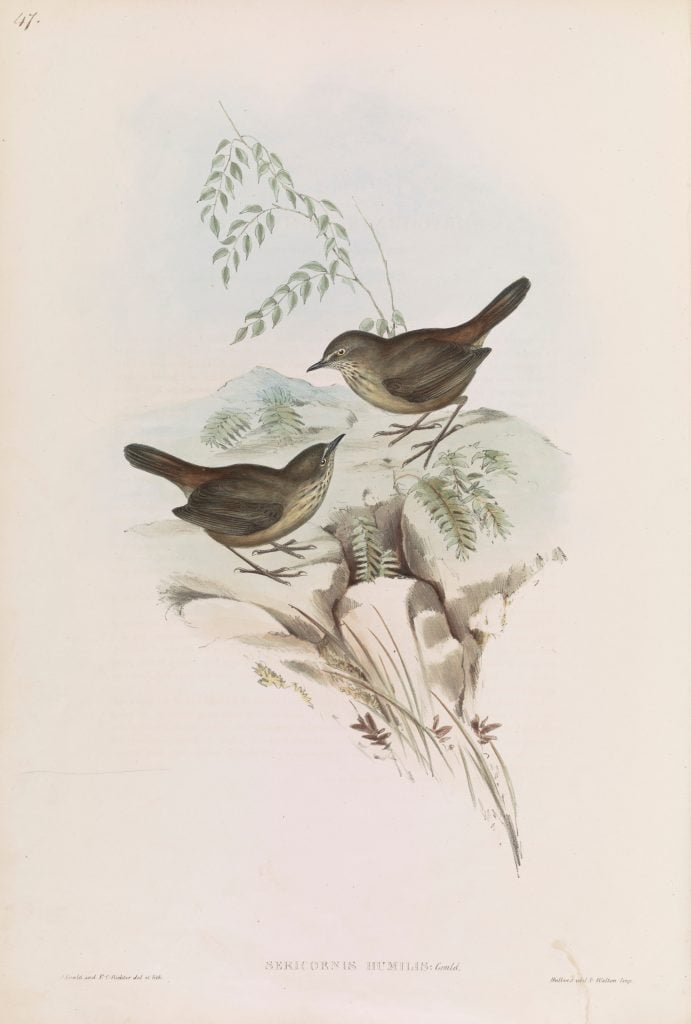Written by Des Cowley and Anna Welch

This year in our World of the book exhibition, we celebrate the life and work of the artist Elizabeth Gould with a display including one of three rare original watercolours by Elizabeth from the Library’s collection.
Natural historian John Gould’s marriage to Elizabeth Coxon in 1829 was a fortuitous one for a number of reasons. Not only had he forged a loving partnership (and all evidence points to the Goulds’ marriage as being a happy one), but he found a working partner, gifted in the art of drawing, to assist him in the production of his books.
Elizabeth Coxen was born in 1804 at Ramsgate to a family that had distinguished itself in military service. She had a typical lady’s education with emphasis on art, music, and languages, which qualified her to be employed as a governess in London. There is some speculation about how Elizabeth and John met. It may have been at the Zoological Society where Elizabeth would often go to draw. But it may have been through her distant relative Henry Coxen, a birdstuffer who apparently had a business connection with John.
Following her marriage to Gould, Elizabeth would give birth of eight children, six of whom would survive. She died shortly after the birth of her eighth child, aged just 37. During her short life, Elizabeth was responsible for the drawings and the lithographic plates for almost all of John Gould’s early natural history publications – some 600 in total. She was taught the still-new technique of lithography by Edward Lear, today better remembered for his wonderful nonsense poems but then earning his living as a natural history artist.
The Australian years
In many ways, Australia was a logical choice for the Goulds’ next major project after The Birds of Europe (1837). There was no general work on the subject. Aside from scientific journals of the day, the only published work devoted solely to Australian birds remained John Lewin’s The Birds of New South Wales, published in Sydney in 1813.
On 16 May 1838, John and Elizabeth Gould set sail from London in the barque Parsee for Australia. With them were their eldest son John Henry, the naturalist John Gilbert, and Elizabeth’s 14-year-old nephew Henry Coxon, son of her late brother. The party arrived in Hobart on 18 September 1838, where John immediately began the task of collecting specimens. He and John Gilbert travelled around Tasmania and the mainland collecting birds for five months.
Elizabeth, meanwhile, was far from idle. Aside from giving birth to their fifth child, named Franklin Tasman after their host and the famous Dutch navigator, she sketched constantly, both from specimens and from nature. She also practiced drawing the flora of the colony, to assist the later rendering of the birds in the natural habitats.

The Goulds returned to England in August 1840, after a stay of some nineteen months in the Australian colonies, and John immediately began work on publishing The Birds of Australia. It was to be issued in 36 parts between 1840 and 1848. These plans were temporarily interrupted by the unexpected and tragic death, shortly after the birth of her eighth child, of Elizabeth in August 1841.
Elizabeth had completed transferring 84 of her original drawings onto lithographic stones to be printed for the publication. The remainder of the 600 lithographic plates were produced by the young artist H.C. Richter, who Gould had earlier employed to share the work with Elizabeth. As you can see by comparing the watercolour sketch and the finished print, the two were never entirely identical, and the image in the lithograph appears in reverse.

At this time, the creation of a lithographic print involved many people (artists, printers, colourists and others), and not all were always credited in the final print – practice varied widely in this regard. It was John Gould’s practice to credit himself as author (of the overall publication), as well as the lithographer, but not the artist who created the original watercolour artwork on which the lithographic print was based. For this reason, though Elizabeth is credited where she was the lithographer as well as the artist, only Richter’s name appears on the prints he created from her drawings after her death. This nuance has led some to believe Elizabeth’s contribution was downplayed at the time because of her gender. While it was – and sadly is – commonplace for a woman to be overlooked in this way, the absence of her name speaks in this case to the complex history of natural history illustration and its practices of attribution.
Movingly, John Gould named the Gouldian finch (Erythrura gouldiae) after his wife and dedicated The Birds of Australia to her memory, celebrating the woman who “laboured so hard and so zealously assisted me with her pencil in my various works”.
This Library holds a complete set of The Birds of Australia, in seven handsome volumes. The condition of the early volumes testifies to their presence on the open-access shelves of the Library, which was founded to be a working library of useful books for those wishing to improve their education. We carry on this important legacy today, sharing the work of Elizabeth Gould and many other women through direct access, digital access and exhibitions like World of the Book.


My Father was born at Stawell in 1916 and was given a copy of one of the books whilst at school. He always treasured the book and to this day it is still in the Family.
Hi, I’ve actually come across some water colours that are Elizabeth Gould’s, I’m in Ashford middx UK,can u tell me what connection she had with this area? Thank you